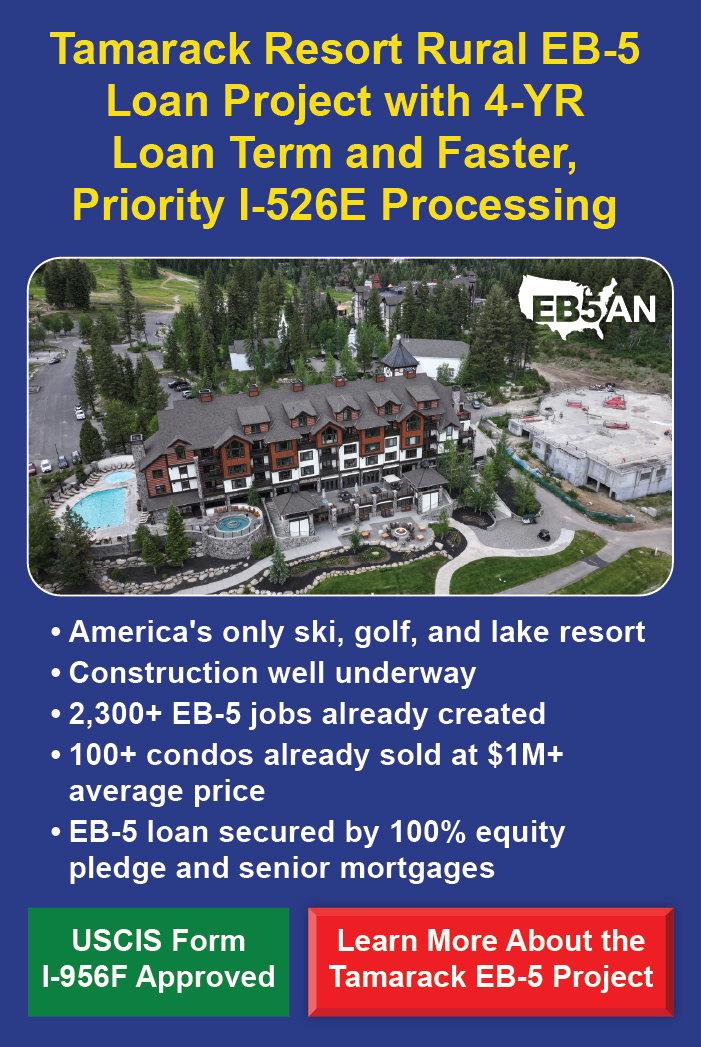
For many foreign workers, the H-1B visa is the most popular route to employment in the U.S. However, this visa category has limitations, such as a maximum stay of six years, job restrictions, and dependency on employers. These setbacks have led H-1B visa holders to seek more stable and permanent routes to a Green Card, which reduce the burden of complex renewal processes.
One promising option is the EB-5 Immigrant Investor Program. By applying to this program, H-1B visa holders may obtain Green Cards for themselves and their families, providing a clear pathway to permanent residency and eventual citizenship in the U.S.
This article will guide you through the process of transitioning from an H-1B visa to an EB-5 Green Card, highlighting the benefits, requirements, and steps involved.
What Is an H-1B Visa?
H-1B Visa vs. EB-5 Visa
What Are the Steps to Transition From H-1B to EB-5?
- Initial Consultation and Planning
- Choosing the Right Investment Projects
- Filing the I-526E Petition and Adjusting Status
Invest in a Green Card With EB5AN
What Is an H-1B Visa?

The H-1B visa is a work visa designed for skilled professionals from other countries to work in specialized fields such as technology, engineering, medicine, and education in the United States. To qualify, applicants must possess a relevant college degree or higher, and secure a job offer from a U.S. employer willing to sponsor them.
The H-1B visa offers several benefits, including the opportunity to live and work in the U.S., bring immediate family members, and gain valuable career experience. However, it does not provide a direct pathway to a Green Card, and those with long-term plans to stay in the U.S. must change their status accordingly.
Challenges H-1B Visa Holders Face
H-1B visa holders encounter several significant challenges that impact both their professional and personal lives. They include:
Job Dependency
H-1B visa holders are highly dependent on their sponsoring employer, so changing jobs requires transferring the visa to a new employer, which can be a complex and uncertain process. In addition, visa holders endure limited career mobility since they cannot work for any employer other than their sponsor, unless they go through the transfer process.
Visa Durations and Extensions
The H-1B visa is initially granted for up to three years, with the possibility of extension for another three years. Aside from some specific cases, after six years, holders must either leave the U.S. or have an approved petition for a different visa category. These extensions are not guaranteed and depend on various factors, including employer sponsorship and meeting stringent criteria.
Green Card Backlogs
Many H-1B visa holders, especially those from countries with high demand like India, turn to immigrant visa options to get Green Cards, but they tend to face long waits due to backlogs. This can leave permanent residency applicants in a prolonged state of uncertainty.
H-1B Visa vs. EB-5 Visa

As mentioned earlier, the EB-5 Immigrant Investor Program presents H-1B visa holders with an effective and permanent approach to their immigration challenges. The EB-5 visa allows immigrants to gain U.S. permanent residency by investing $800,000 in a new commercial enterprise (NCE) within a targeted employment area (TEA) or $1,050,000 elsewhere in the U.S.
Below are some of the ways in which an EB-5 visa may help H-1B visa holders:
Path to Permanent Residency
Where an H-1B visa initially provides a temporary work visa, the EB-5 visa provides a direct path to permanent residency for the investor and their immediate family. Eligible EB-5 Green Card holders can apply for U.S. citizenship by naturalization after five years.
Investment Over Employment
The EB-5 program requires a significant minimum investment amount of $800,000 in a targeted employment area or $1,050,000 elsewhere, plus the creation of 10 jobs. However, through this pathway, H-1B visa holders get to be less reliant on employers and make immigration decisions with independence.
Flexibility and Mobility
Since EB-5 visas are not tied to any one person, they afford applicants some level of flexibility and stability compared to H-1B visa holders. As a result, EB-5 investors who receive employment authorization documents (EAD) and advance parole (AP) through concurrent filing may travel outside the country and take on jobs with whomever they wish without any strict restrictions. This gets even more flexible once they receive their initial EB-5 Green Cards.
What Are the Steps to Transition from H-1B to EB-5?
As an investor ready to change from an H-1B to an EB-5 visa, you must take careful steps to ensure that the process runs smoothly. This section provides the necessary steps to achieve success in obtaining an EB-5 Green Card.
Initial Consultation and Planning
The first step is to consult with immigration attorneys and industry experts to plan your EB-5 investment. A consultation will help you understand the legal and financial implications of the investment. These professionals will help guide the visa process and assist with structuring your investment to meet EB-5 requirements.
Choosing the Right Investment Projects
Selecting the right investment project is crucial. The project must meet EB-5 requirements and align with your financial goals. Research the project’s background, management team, and track record. Ensure that the project has a clear plan for job creation and is likely to succeed. You should also consider factors such as the project’s location, industry, and economic impact.
Filing the I-526E Petition and Adjusting Status
The I-526E petition is a critical part of the EB-5 process. This petition proves that your investment meets EB-5 requirements. It includes detailed documentation of the investment, such as the business plan, job creation plan, and evidence of the source of funds. Accurate and thorough documentation is essential to avoid delays or denials.
If you are in the U.S. on a valid H-1B visa, you may qualify for concurrent filing of your Form I-526E at the same time as your Form I-485 to adjust your status to conditional permanent resident.
Toward the end of your two-year conditional permanent residency, you can file Form I-829 to remove conditions on your Green Card and become an unconditional permanent resident.
Invest in a Green Card With EB5AN

Transitioning from an H-1B visa to an EB-5 Green Card offers a clear path to permanent residency in the United States, providing greater stability and opportunities for you and your family. However, this is a complex transition that requires the assistance of experienced and knowledgeable industry professionals.
EB5AN has a proven track record of helping over 2,300 investors and their families successfully obtain their U.S. Green Cards. Read some of their testimonials here.
Schedule a free consultation with our expert team today to learn more about how you can adjust your status in the U.S. and become a permanent resident.











